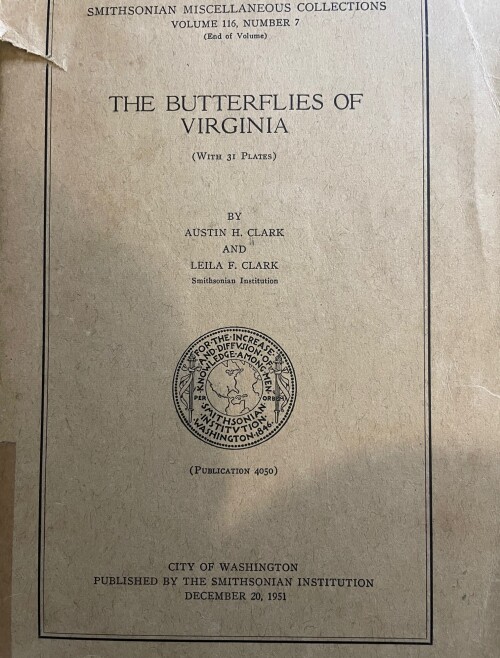
I pulled this book out to research something, and got caught reading it. I'd forgotten just how wonderfully chock full it is with information. It's not just about Virginia's butterflies- it goes into extensive observations by Mr. and Mrs. Clark and other researchers, correlations with weather patterns, and goes well into other states. Unlike most books on identification (from Golden Nature to Opler or Scott) this one goes into details...it's more like a very thorough field notes.
Though many hypotheses and taxonomic "facts" have been changed in the 70 years since publication, it is astonishing the number of questions raised, generally in the form of observations that don't quite form a conclusion, that remain unanswered today. And being a snapshot of the time, focused on the early 20th century, some observations now may be relevant, such as one taxon that had apparently been moving north- an early harbinger of climate change?
It's an astonishing read, from end to end, because it's not just a book about butterflies, it's a story, a true story. Clearly, the author didn't intend it to be that way, but with all the name dropping, period observations, and data it has become a story.
Unfortunately, I could not find a copy available online to purchase. But you may want to keep your eyes open.




